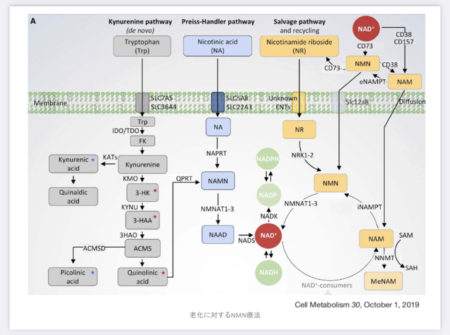Start your Nadpura (NAD+) life NAD+ Production (Synthesis) Part 2: Niacin (2)
In the human body, niacin is required as a coenzyme in cells throughout the human body.
It is also the most abundant vitamin in the body as a component of enzymes.
Niacin ingested as food is mainly absorbed as NA from the small intestine, and is converted into NAM (Nicotinamide), NAD+, and NAD phosphate (NADP) in the body, and exerts its functions.
In addition to being absorbed from food, niacin can be produced in the liver from the essential amino acid tryptophan, which is abundant in milk and eggs. At that time, vitamin B1, vitamin B2, and vitamin B6 are required, and even if these vitamins are insufficient, the body will not be able to produce enough niacin.

The most well-known physiological action of niacin is its action as an auxiliary (coenzyme) for enzyme proteins that work to produce substances that serve as energy sources in cells and to metabolize alcohol. There are more than 500 types of enzymes in the body that require such NAD+, accounting for about 20% of the enzymes that work in the human body.
In addition, a series of drug-metabolizing enzymes called P450 utilize NADP, so it is important not only for maintaining vital activities but also for drug metabolism.
It is also involved in the action of antioxidant vitamins such as vitamin E and vitamin C.

